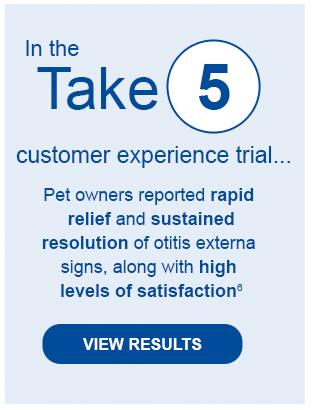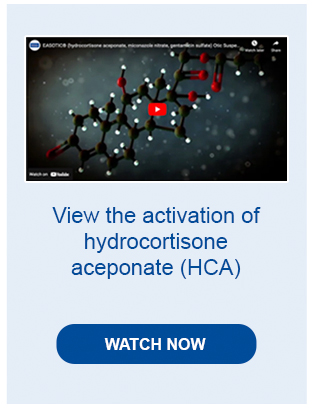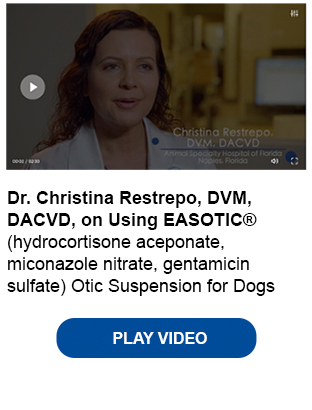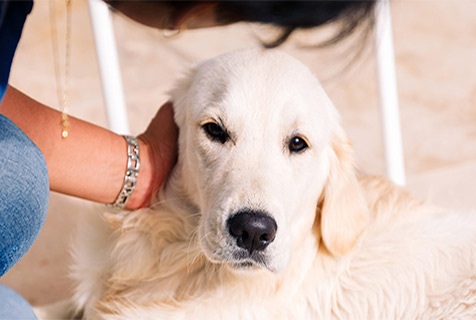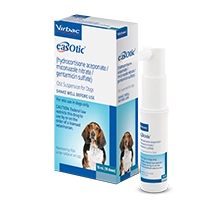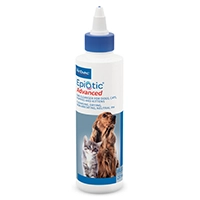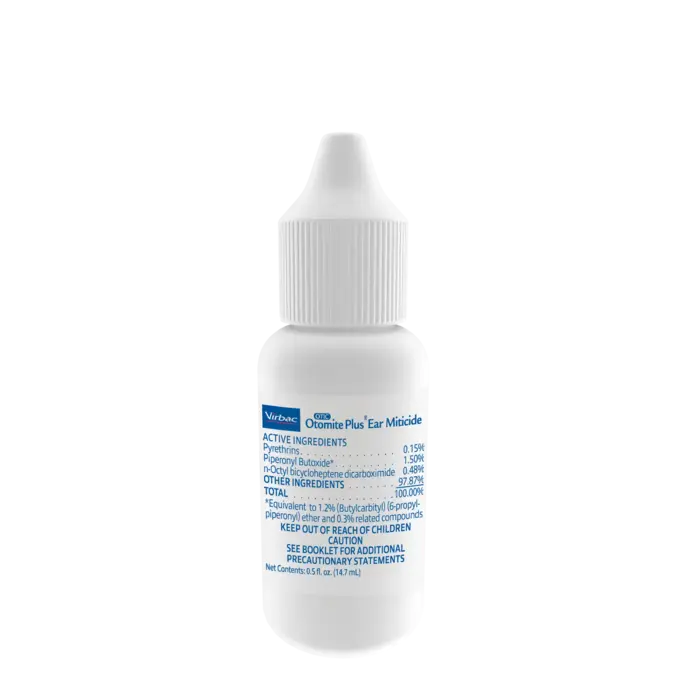
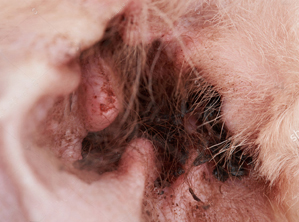 Ear Health:
Ear Health:
OTITIS EXTERNA (CANINE)
Otitis externa is one of the most common reasons for veterinary visits.1
While the condition may affect any dog, certain dogs are prone to otitis externa: those with allergies, dogs with long or floppy ears, and dogs that swim or like to get wet.1
Uncontrolled inflammation, a significant contributor to chronic otitis externa, may lead to progressive pathologic changes in the ear, including fibrosis, calcification, and severe stenosis.2 Anti-inflammatory drugs are critical in preventing recurrence and chronicity.
Important Safety Information
EASOTIC® (hydrocortisone aceponate, miconazole nitrate, gentamicin sulfate) Otic Suspension for Dogs: For otic (ear) use in dogs only. Humans with known or suspected hypersensitivity to hydrocortisone, aminoglycoside antibiotics, or azole antifungals should not handle this product. Contraindicated in dogs with known or suspected hypersensitivity to corticosteroids, imidazole antifungals, or aminoglycoside antibiotics. Do not use in dogs with known tympanic membrane (ear drum) perforation. The safe use of EASOTIC Otic Suspension in dogs used for breeding purposes has not been evaluated. Do not administer orally. For full prescribing information, contact Virbac at 1-800-338-3659 or visit us.virbac.com or view the Product Insert.
References: 1. Woodward, M. Otitis externa in animals. Merck Veterinary Manual. Available at: https://www.merckvetmanual.com/ear-disorders/otitis-externa/otitis-externa-in-animals Updated October 2020. Accessed July 27, 2021. 2. Bajwa J. Canine otitis externa — Treatment and complications. Vet Derm. 2019;60:97–99. 3. Schackert C, Korting HC, Schäfer-Korting M. Qualitative and quantitative assessment of the benefit/risk ratio of medium potency topical corticosteroids in vitro and in vivo. BioDrugs. 2000;13:267–277. 4. Schäfer-Korting M, Gysler A. Topical glucocorticoids with improved benefit/risk ratio. In: Korting HC, Schafer-Korting M, eds. The Benefit/Risk Ratio: A Handbook for the Rational Use of Potentially Hazardous Drugs. Boca Raton, FL: CRC Press; 1999:359–372. 5. Guaguère E, Bensignor E, Carlotti DN, et al. Clinical practice guidelines on the best use of topical corticosteroids in canine dermatology. Prat Med Chir Anim Comp. 2011;46:S1–S22. 6. Data on file. Virbac Corporation.
Otitis Externa

Otitis Externa is a common condition and one of the top reasons pet owners bring their pet to the veterinarian1. In fact, up to 12% of dogs and 6% of cats are affected by otitis externa2. Initially, acute inflammation and infection need to be addressed. Subsequently, routine cleansing of ears and maintenance of healthy ear canals becomes important, especially in patients prone to ear problems.
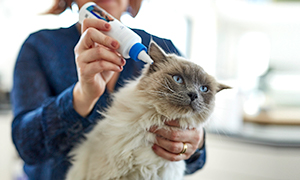
With acute otitis externa, it is important to prescribe a topical medication that contains a safe, yet effective steroid to reduce inflammation, and antibacterial and antifungal components to target secondary infection. In addition to topical therapy, the primary cause of the patient’s otitis externa must be identified.
Most commonly, otitis externa in dogs is triggered by allergic disease, including atopic dermatitis and food hypersensitivities3. And while otitis externa may be the only presenting clinical condition in these canine patients, frequently there is concurrent superficial pyoderma or generalized pruritus, which necessitates additional topical or systemic therapy.
Other underlying causes of otitis externa should also be investigated, including the presence of foreign bodies, keratinization disorders and ear mites4. In cats, the most common primary cause of otic inflammation is Otodectes cynotis, responsible for up to 50% of cases of feline otitis externa5. Evaluating aural exudate for the presence of ear mites is particularly important in feline patients presenting with acute otitis externa. If mites are identified, treatment with a topical miticide is both effective and inexpensive.
Once the dog or cat is treated for otitis externa, a maintenance ear cleansing protocol can help support good ear health. The ideal cleanser should work to emulsify and disperse wax and debris, while helping keep ear canals dry. It should also be well tolerated and non-irritating. The formulation of a neutral pH cleanser can minimize pet discomfort and stinging upon application, and is also less likely to interfere with concurrent ear treatments (e.g. aminoglycosides, fluoroquinolones6). In patients prone to infection, incorporating advanced technologies that provide micro-organism anti-adhesive and anti-irritant effects can help limit microbial adherence while soothing the skin.
References:
1. DVM360 – May 14, 2019 – Top 3 most common pet insurance claims (https://www.dvm360.com/view/top-3-most-common-pet-insurance-claims)
2. State of Pet Health 2016 Report. Banfield Pet Hospital website. https://www.banfield.com/Banfield/media/PDF/Downloads/soph/Banfield-State-of-Pet-Health-Report-2016.pdf. Accessed March 10, 2021.
3. Zur G, Lifshitz B, Bdolah-Abram T. The association between the signalment, common causes of canine otitis externa and pathogens. J Sm Anim Prac. 2011;52:254–258.
4. Scott DW, Miller WH, Griffin CE, eds. Diseases of eyelids, claws, anal sacs, and ears. In: Muller & Kirk’s Small Animal Dermatology. 6th ed. Philadelphia, PA: Saunders Elsevier; 2001a:1185–1235.
5. Forsythe P. Feline Otitis. British Small Animal Veterinary Congress, 2013.
6. Papich M. Current Concepts in Antimicrobial Therapy in Small Animals. WSAVA World Congress Proceedings, 2001.


